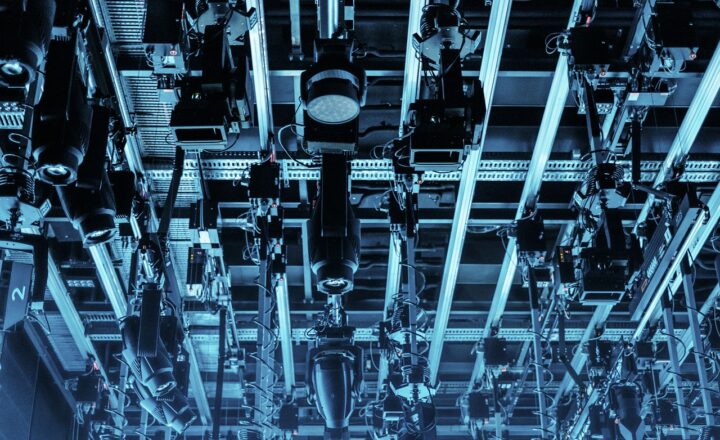From Fiction to Fact: The Real-Life Technologies Behind Sci-Fi Films
November 11, 2024

Science fiction films have long captivated audiences with their imaginative storytelling and futuristic technologies. From flying cars to advanced artificial intelligence, these cinematic wonders often blur the lines between fantasy and reality. But what many viewers may not realize is that several technologies once thought to be purely fictional are now cornerstones of modern science and engineering. In this article, we’ll explore some of the most fascinating technologies introduced in sci-fi films that have transitioned from the realm of fiction to fact.
1. The Rise of Artificial Intelligence
Artificial intelligence (AI) has become a staple in many sci-fi films, often portrayed as sentient beings capable of independent thought and emotion. Classics like “2001: A Space Odyssey” introduced HAL 9000, an AI that operates a spacecraft, showcasing a complex interaction with humans.
Today, AI plays a crucial role in various industries, including healthcare, finance, and transportation. Modern AI systems, such as chatbots and virtual assistants like Siri and Alexa, have come a long way from their fictional origins. Machine learning, natural language processing, and neural networks are just a few of the technologies that have evolved from science fiction to practical applications in our everyday lives.
2. Virtual Reality (VR) and Augmented Reality (AR)
Virtual reality and augmented reality are popular themes in many sci-fi films. In “The Matrix,” for example, humans are plugged into a simulated reality, while movies like “Ready Player One” depict immersive virtual worlds where anything is possible.
Today, VR and AR technologies are quite tangible. The gaming industry has embraced virtual reality, with devices like Oculus Rift and PlayStation VR allowing players to experience gaming in a 360-degree environment. Likewise, augmented reality applications, such as Pokémon GO and AR glasses, are transforming how we interact with the digital world, enhancing our perception of reality rather than replacing it.
3. Robotics: The Machine Revolution
Robots have been a consistent element in sci-fi narratives, with films like “Blade Runner” and “I, Robot” portraying advanced humanoid robots designed to interact with humans. These portrayals often raise ethical questions about consciousness and rights.
In reality, robotics has advanced significantly. Robots are now used in manufacturing, space exploration, and even healthcare. Humanoid robots like Boston Dynamics’ Atlas demonstrate capabilities such as walking, jumping, and performing complex tasks. Furthermore, robotic surgery is enhancing precision in medical procedures, reflecting the journey from cinematic imagination to tangible reality.
4. Space Exploration Technologies
The vast expanse of space has been a favored backdrop for sci-fi films. In “Star Wars,” intergalactic travel and advanced spacecraft capture the imagination of viewers. On a more scientific level, films like “Interstellar” explore theories of time and black holes while pushing the boundaries of what we understand about the universe.
Today, advancements in rocket technology, such as SpaceX’s reusable rockets and NASA’s Artemis program, are paving the way for renewed interest in space exploration. With plans for missions to Mars and beyond, the feats of science fiction are increasingly being realized as we push the frontiers of human exploration.
5. 3D Printing: The Future of Manufacturing
In films like “Star Trek,” the concept of replicators that can create food, clothing, and even machinery from raw materials has inspired a real-world revolution in manufacturing – 3D printing.
3D printing technology is now used to create everything from prototypes to medical implants, and even food. This groundbreaking technology allows for the on-demand production of items, reducing waste and enabling creativity in design. As 3D printing continues to evolve, it’s becoming an integral part of modern manufacturing and innovation.
6. Drones: From Military Tools to Everyday Helpers
Drones have been a common feature in sci-fi films, often depicted as surveillance tools or flying vehicles. In “The Terminator,” drones are used for tracking and control, representing the leap from technological concept to prevalent innovation.
Today, drones serve various purposes, from military applications to photography, farm monitoring, and even delivery services. Companies like Amazon and Google are exploring drone delivery systems as part of their logistics strategies, showcasing how science fiction concepts have influenced modern technology development.
7. Smart Homes and the Internet of Things (IoT)
Films like “Minority Report” present futuristic homes filled with smart technology, capable of anticipating the needs of their inhabitants. Although we might not have homes that think for themselves, smart home technology is now very real.
The Internet of Things (IoT) connects everyday devices to the internet, allowing for remote control and automation. From smart thermostats to security systems and kitchen appliances, IoT devices create a more comfortable and efficient living environment, bringing elements from sci-fi to everyday life.
8. Conclusion: The Impact of Sci-Fi on Technological Evolution
In conclusion, the journey from fiction to fact in the realm of technology is a remarkable aspect of human ingenuity. Sci-fi films have inspired generations of innovators and thinkers to dream big and push the boundaries of what is achievable. As we integrate concepts from these imaginative works into our reality, we must continue to explore the moral, ethical, and societal implications of these advancements. So, the next time you watch a sci-fi film, consider how those fantastical elements might not be so far removed from the world we live in today.
Whether pondering AI ethics or contemplating the next great space adventure, sci-fi will undoubtedly continue to inspire the technologies of tomorrow—reminding us that the future may be closer than we think.








